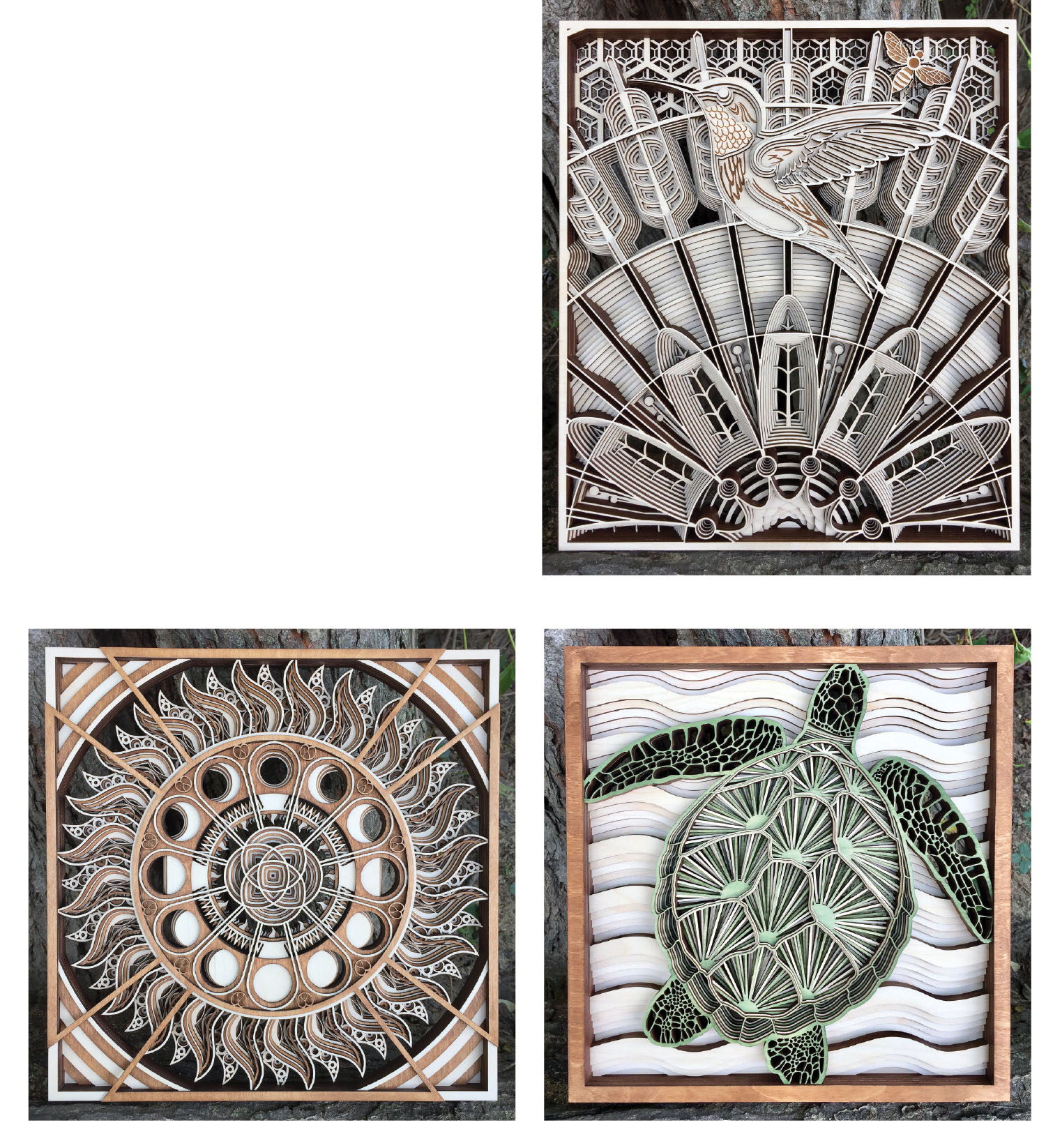
“Her name is Sasha,” says Ron Adolph. “She’s a sexy minx.”
Ron’s wife Jessica doesn’t appear bothered by the amount of attention her husband lavishes on Sasha — his beloved laser cutter. “These are complex machines with their own personalities, and we spend a lot of time together,” he jokes. “So it only seems natural to name them, right? Next question, please.”
It’s not been a long-term relationship, as he acquired his laser cutter just two years ago. “The first time I saw one, I was hooked. The precision and intricate detail made possible by the laser appealed to me.” The attraction was so strong that Ron says he quit his “soul-sucking corporate career” to devote all of his available time to learning how to utilize his new purchase, and hopefully “find something more fulfilling.” He adds, “I’ve never looked back.”
Ron creates amazingly intricate sculptural pieces that invite introspection from different angles. The design pulls the viewer in deep. He says he sometimes knows what he wants a piece to be before he begins. “Other times, I start by playing with shapes and patterns, and the art ends up choosing the artist.” He’ll occasionally work out a rough sketch beforehand, but says he prefers to get into the software stage (he uses Corel Draw) as early as possible. “That’s my wheelhouse.”

can take 100 hours to make, but he’s still smiling. Portrait by Paul Stebner
Once he’s settled on a design on his computer, he sends the program files to the laser and begins cutting the wood. His favorite is Baltic birch because it’s strong and cuts well.
(He emphasizes he uses only Forest Stewardship Council-certified wood from responsibly managed forests.)
When a layer is done — his pieces are often comprised of eight or more layers — he sands the wood and stains it before moving onto the next layer. The final step, assembling all those layers, can be mind-numbing work. “Everything has to line up perfectly, and there are a lot of elements to check before the glue dries.”
The entire creative process can take more than 100 hours.
His pieces range from animals and other scenes from nature to more geometric shapes and patterns. “I would like to pursue more abstract work in the future,” says Adolph. He’s toying with the idea of including light to make the sculptures glow.
Adolph is quick to credit others with supporting his fledgling art career, especially the Asheville Area Arts Council. “That was the first place I showed my work. It was a juried members exhibit and I sold my first piece there. If it wasn’t for them, I might not be where I am.”
He also acknowledges he’s felt some pushback from the traditional arts community because he uses a machine to create his art. He counters, “My mouse is my brush and the laser is my kiln.” Lasers, 3-D printers, and other modern tools blur the line between fine art and craft. “It’s downright evolutionary,” says Adolph.
The dimensions of his work are currently constrained to 14×16 inches, due to the limitations of his laser cutter. “I would love to go larger at some point,” he says, “but lasers can be quite expensive.”
And what would Sasha think?

Ron Adolph, Mountain Made Art Gallery in the Grove Arcade (1 Page Ave., #123, Asheville, mtnmade.com, 828-350-0307) and at Artisans on Main
(14 N. Main Street, Weaverville, 828-658-9617).
Beautiful intricate work. A true artist. I wish you much success.
I love your hummingbird and would like to see a kitty.
Very awesome work, down right ingenious!
Absolutely gorgeous!!! Unique and wonderful!